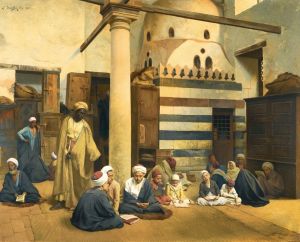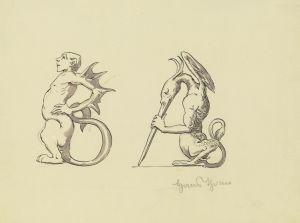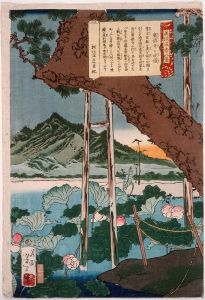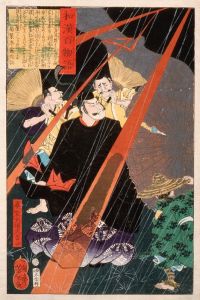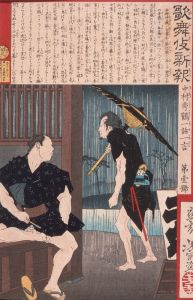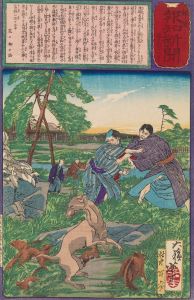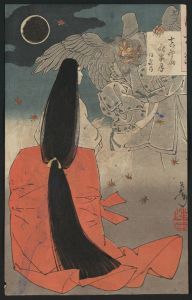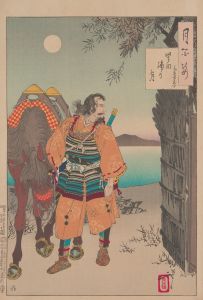
Sugawara no Michizane
A hand-painted replica of Tsukioka Yoshitoshi’s masterpiece Sugawara no Michizane, meticulously crafted by professional artists to capture the true essence of the original. Each piece is created with museum-quality canvas and rare mineral pigments, carefully painted by experienced artists with delicate brushstrokes and rich, layered colors to perfectly recreate the texture of the original artwork. Unlike machine-printed reproductions, this hand-painted version brings the painting to life, infused with the artist’s emotions and skill in every stroke. Whether for personal collection or home decoration, it instantly elevates the artistic atmosphere of any space.
Tsukioka Yoshitoshi (1839–1892) was a prominent Japanese ukiyo-e artist, known for his innovative and dramatic woodblock prints during the late Edo and early Meiji periods. Among his many works, Yoshitoshi created a depiction of Sugawara no Michizane, a revered historical figure in Japanese culture. Sugawara no Michizane (845–903) was a scholar, poet, and politician of the Heian period, later deified as Tenjin, the Shinto god of scholarship and learning.
The artwork "Sugawara no Michizane" by Yoshitoshi is part of his broader body of work that often explored historical, mythological, and supernatural themes. Yoshitoshi was known for his ability to capture the essence of his subjects with vivid detail and emotional depth, and this piece is no exception. The print portrays Sugawara no Michizane in a manner that reflects his intellectual and spiritual legacy. While specific details about this particular artwork are limited, it is consistent with Yoshitoshi's style of blending realism with dramatic and symbolic elements.
Sugawara no Michizane's life and legacy have been a popular subject in Japanese art and literature. He was a highly respected scholar and poet, excelling in Chinese literature and Confucian studies. However, his political career ended in exile after being falsely accused of treason. Following his death, a series of natural disasters were attributed to his vengeful spirit, leading to his posthumous pardon and eventual deification as Tenjin. His story has inspired numerous works of art, including kabuki plays, noh performances, and visual art.
Yoshitoshi's depiction of Michizane likely draws upon these historical and cultural associations, presenting him as a figure of dignity and intellect. The artist's use of bold lines, intricate patterns, and expressive facial features would have been intended to evoke both the humanity and the divine aura of Michizane. Yoshitoshi's work often reflected the transition from traditional to modern Japan, and his portrayal of historical figures like Michizane served to connect contemporary audiences with their cultural heritage.
As with many of Yoshitoshi's prints, this artwork would have been produced using the traditional woodblock printing technique, involving collaboration between the artist, carvers, and printers. This method allowed for the creation of detailed and colorful images that were widely accessible to the public during the Edo and Meiji periods.
While specific contextual details about this particular print are scarce, it remains an example of Yoshitoshi's skill in capturing the spirit of historical figures and his contribution to the preservation of Japanese cultural identity through art.






